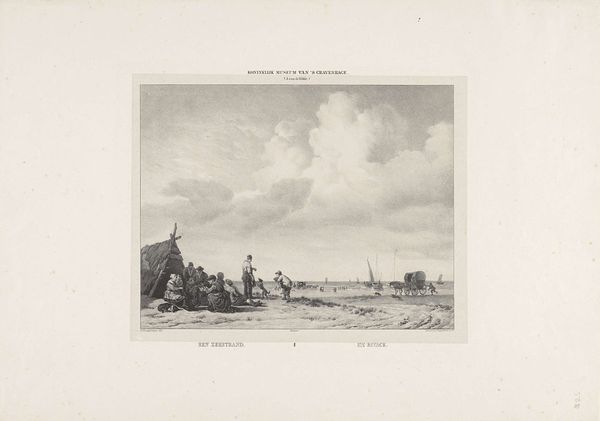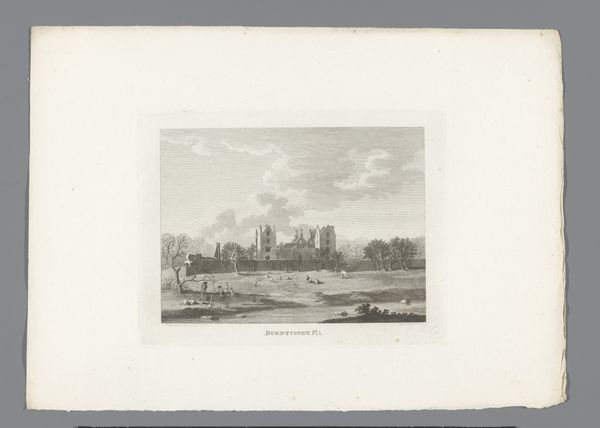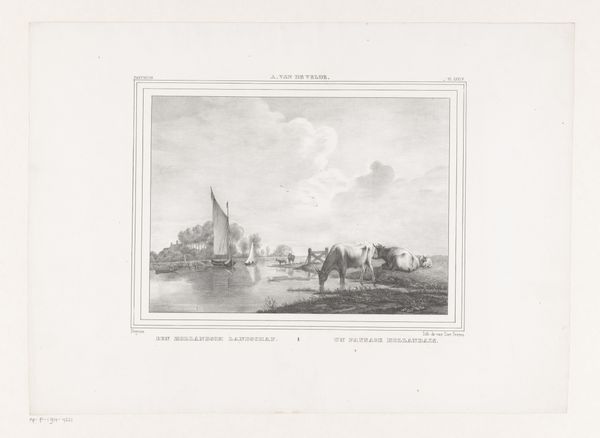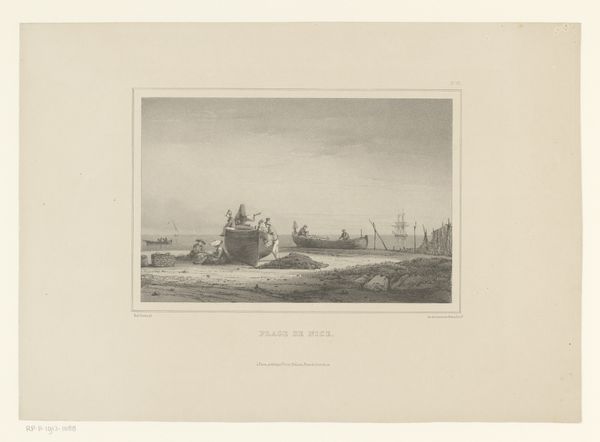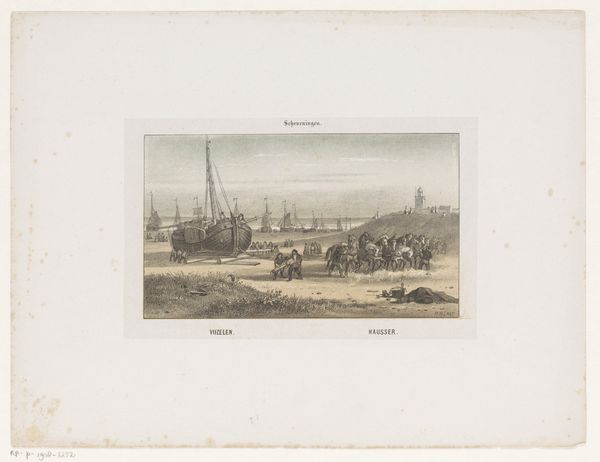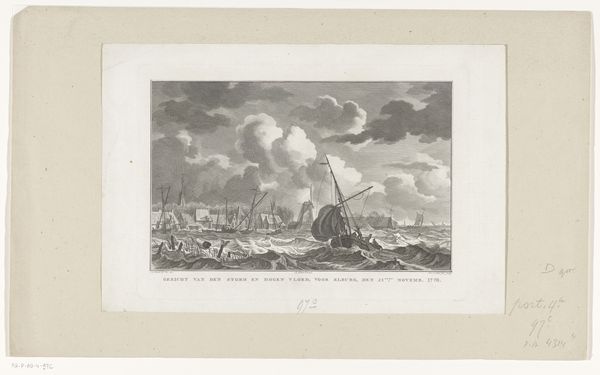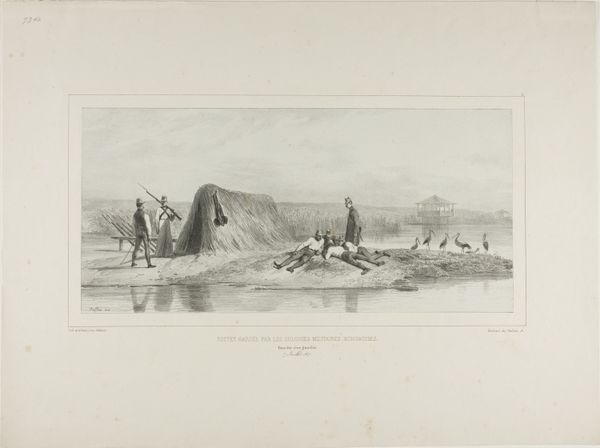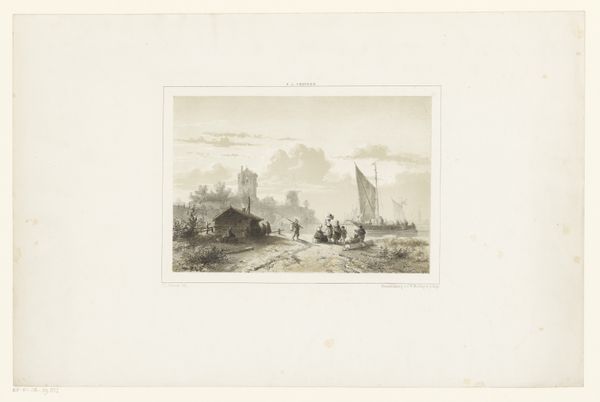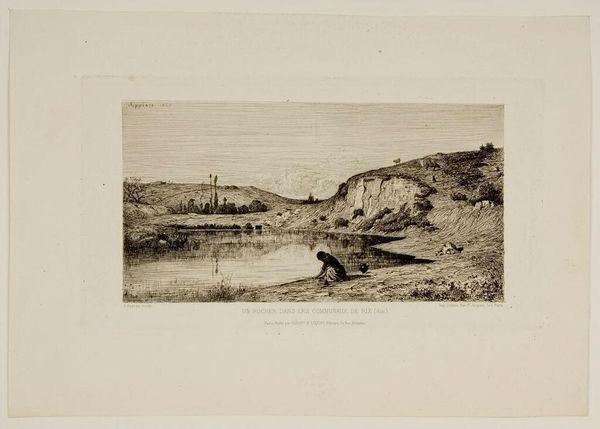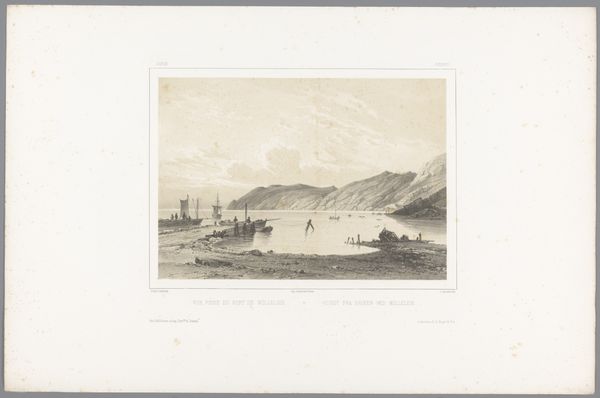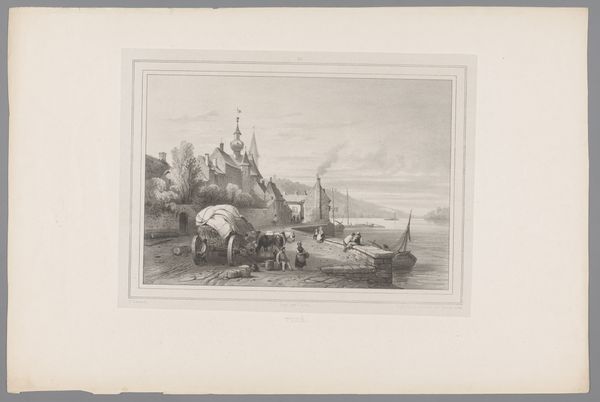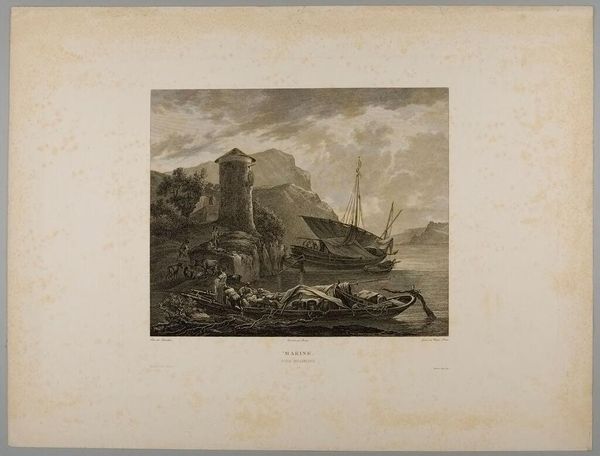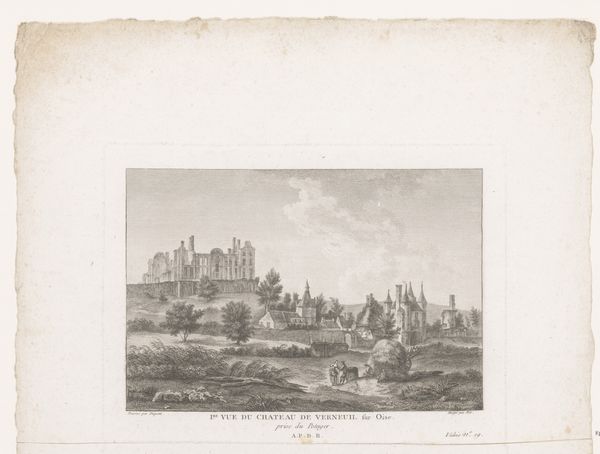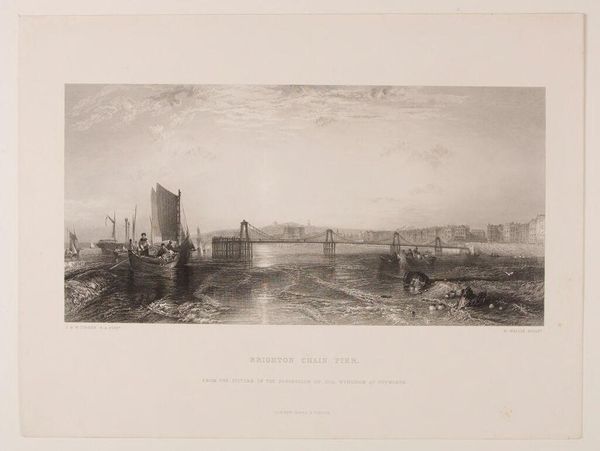
print, engraving
# print
#
landscape
#
ancient-egyptian-art
#
romanticism
#
tonal art
#
engraving
Dimensions: height 145 mm, width 200 mm
Copyright: Rijks Museum: Open Domain
Curator: Friedrich Salathé's "Gezicht op de Vallei der Koningen te Egypte," or "View of the Valley of the Kings in Egypt," completed before 1841, offers a window into early 19th-century Orientalism. As an engraving, its precise lines present a detailed yet somewhat romanticized vision of this iconic landscape. Editor: It strikes me immediately as rather bleak. The tonal qualities emphasize vastness, and there's a stillness that feels almost oppressive. Those small tents and figures seem insignificant against the backdrop of those structures. Curator: Indeed. This work resonates deeply with the Romantic movement, presenting a perspective influenced by European encounters with ancient Egypt. While based on actual sites, the scene incorporates layered symbolic weight. Notice the visual hierarchy: ancient structures dwarfing modern life, implying timelessness. Editor: You’re right. It feels consciously composed to invoke feelings of awe and even a sense of melancholy. There’s also the colonial context that can't be ignored; views like these helped shape and reinforce European perceptions of the Middle East. The tents subtly represent contemporary life against immortal Egypt, furthering the colonial narrative. Curator: The use of engraving as a medium plays a role. Its precision gives a veneer of objective record-keeping while also idealizing its subject. The contrast highlights the symbolic difference between temporary human presence and lasting cultural memory. Editor: Considering its wide dissemination through print, the impact this image would have had is profound. It created a mental landscape of the Valley of Kings for audiences far removed from Egypt. The detail embedded would lead viewers to believe it was true and factual, yet in truth it's highly filtered. Curator: Absolutely. It is a prime example of how imagery molds perception, how our understanding of history can be actively formed through selective framing. Editor: I now view it less as pure landscape, and more a piece of carefully constructed cultural commentary. Curator: Exactly, where the landscape functions less as physical geography and more as the stage for a meditation on time, power, and cultural inheritance.
Comments
No comments
Be the first to comment and join the conversation on the ultimate creative platform.
